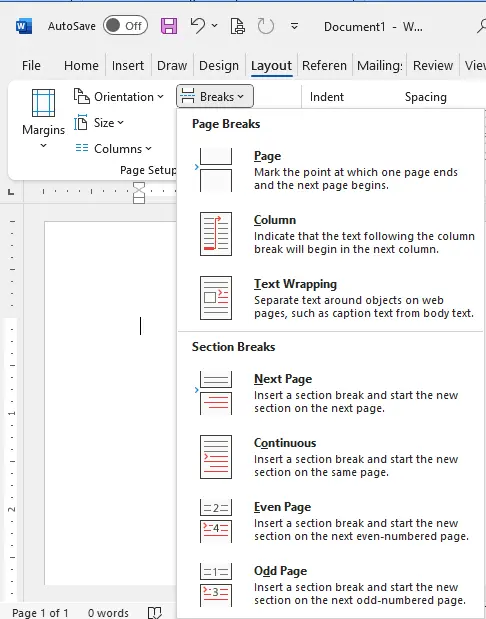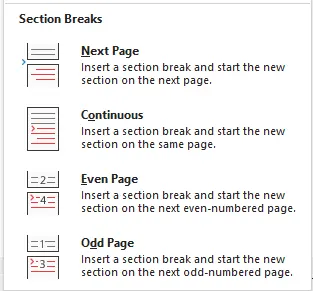This blog will explore how to use breaks in Word 365. Users who are not familiar often mistakenly make the mistake of creating new sections or pages by simply hitting their Enter key repeatedly until they have created the appearance of a new page or a new section in their document. It drives me crazy when I receive a document to work on and encounter this. It takes a lot of time and keystrokes. I am all about getting things done efficiently and quickly.
The issue with this technique is that if you or anybody else goes back and modifies a previous paragraph in the document, inserts an image, or resizes anything that occurs before all those carriage returns, all of that space just shifts to an unexpected location in the content.
You need to know that a break is different than just pressing the Enter key on your keyboard. In fact, if you open any Word document and enable the Show/Hide feature, you will see all of the hidden formatting marks (non-printing characters) in that document, including all spaces, pilcrows (paragraph markings), and section breaks.
All spaces will appear as tiny dots between each word if your formatting marks are visible. Section breaks, however, will appear in dotted lines with the words Section Break and then the kind of break following in parentheses.
You can create two basic types in Word: Page breaks and section breaks. Most people are familiar with page breaks and the most popular. However, there are also other types of page breaks: column and text wrapping. A column break stops the text in one column and repeats the text at the beginning of your next column. A text wrapping break will separate text from objects on web pages. Those three breaks are the type of page breaks you will find in Word. This leads us to create a page break and a section break.
Use Breaks in Word 365
Follow the steps below to learn how to use breaks in Microsoft Word 365.
Once your document is completed and you have decided which type of break will work for you, save your document.
Firstly, you must move your insertion point to where you would like your break to begin.
You must go to the layout tab and Breaks, which will open the Breaks menu.

Toward the top, you will see Page. Click on this to insert a page break.
That was easy. Now, we can move to the section breaks. There are different types of section breaks besides the one we discussed earlier, which starts a new section and keeps the text on the same page. These include the next page break, the even page section break, and the odd page section break.
What is the reason why all these breaks are necessary? The answer is that section breaks are useful when you want a portion of your document to look different and stand out more than the rest. Each section can have its own look, with its own page orientation, style, headers, and footers, and other ways of formatting.
Follow the instructions below to learn how to insert a section break.
Move your insertion point to where you would prefer your break to start.
In the Layout tab, click Breaks. It will open the Breaks menu.

In the middle of the menu, you will see Section Breaks.
Select Continuous to insert a continuous section break.
Read more about How To Disable Auto Bullets Numbering in Word 365


